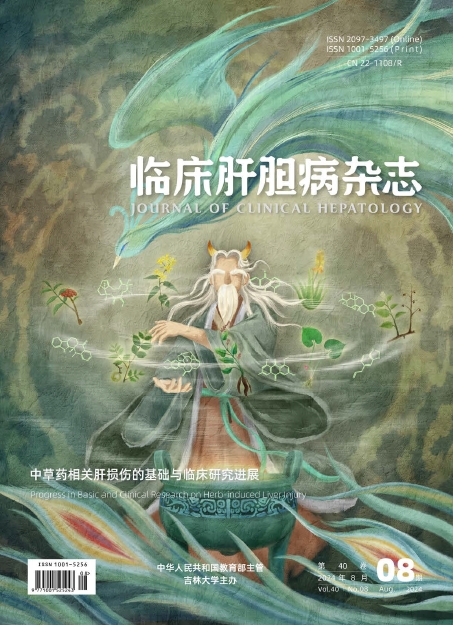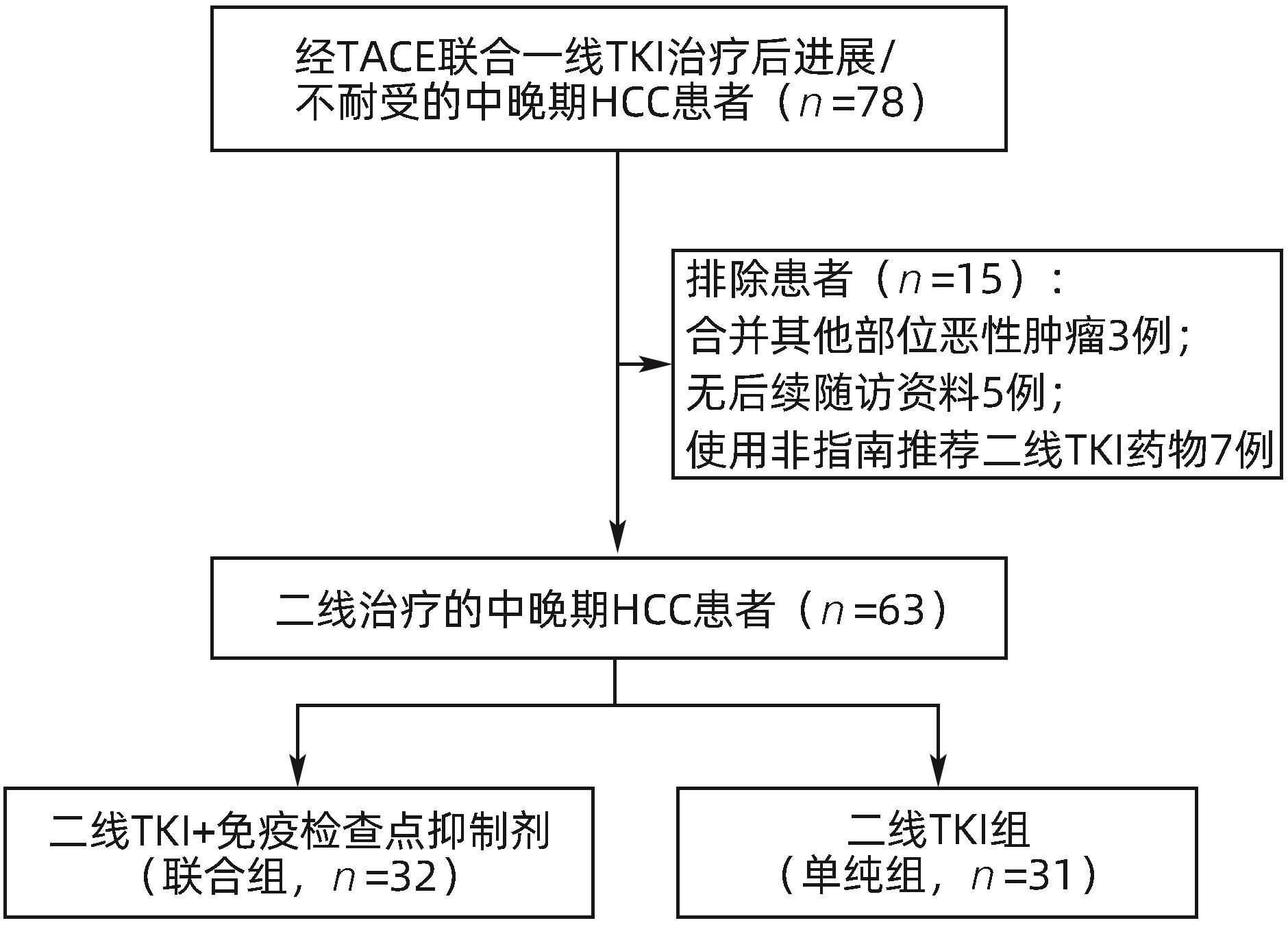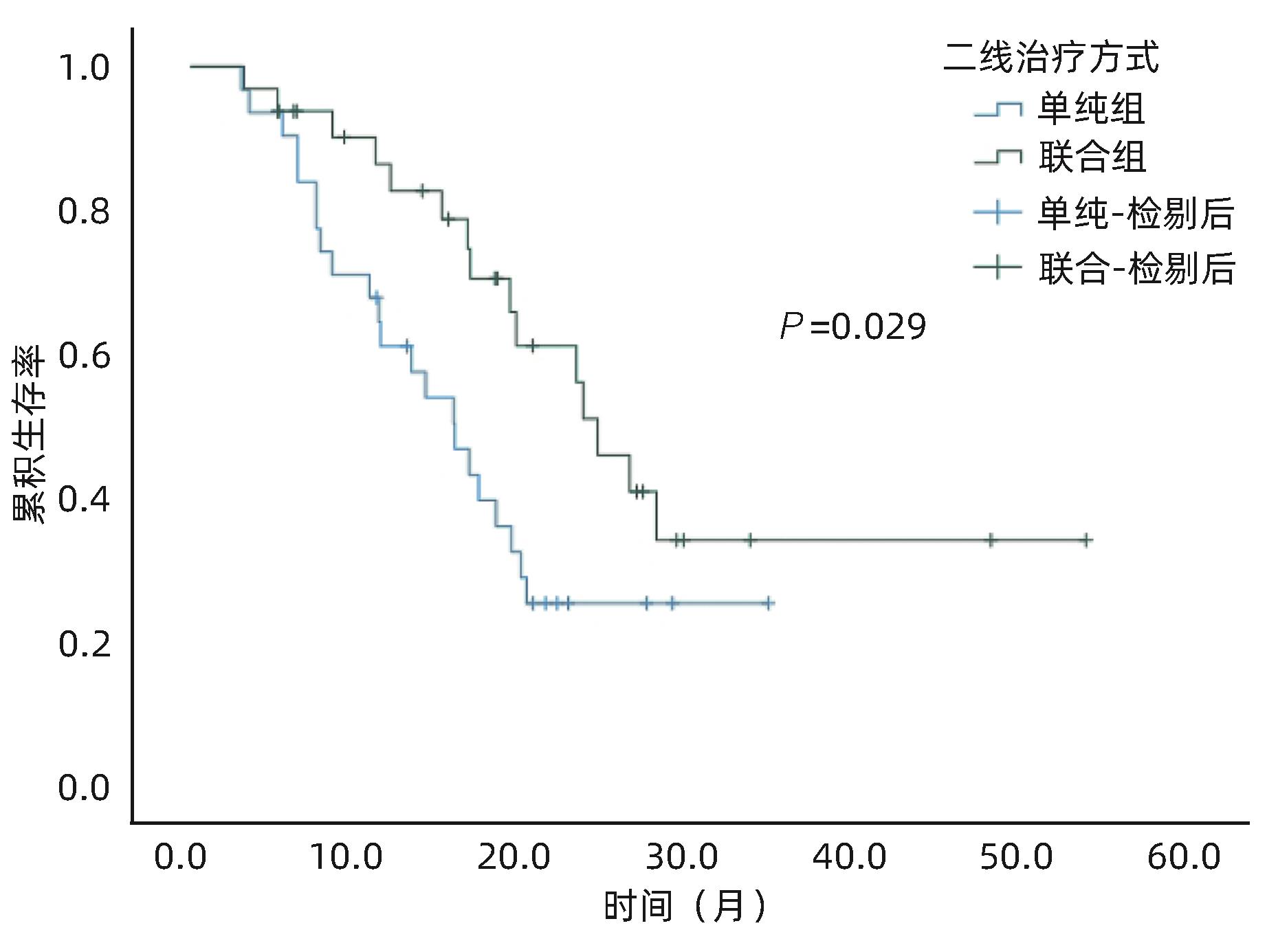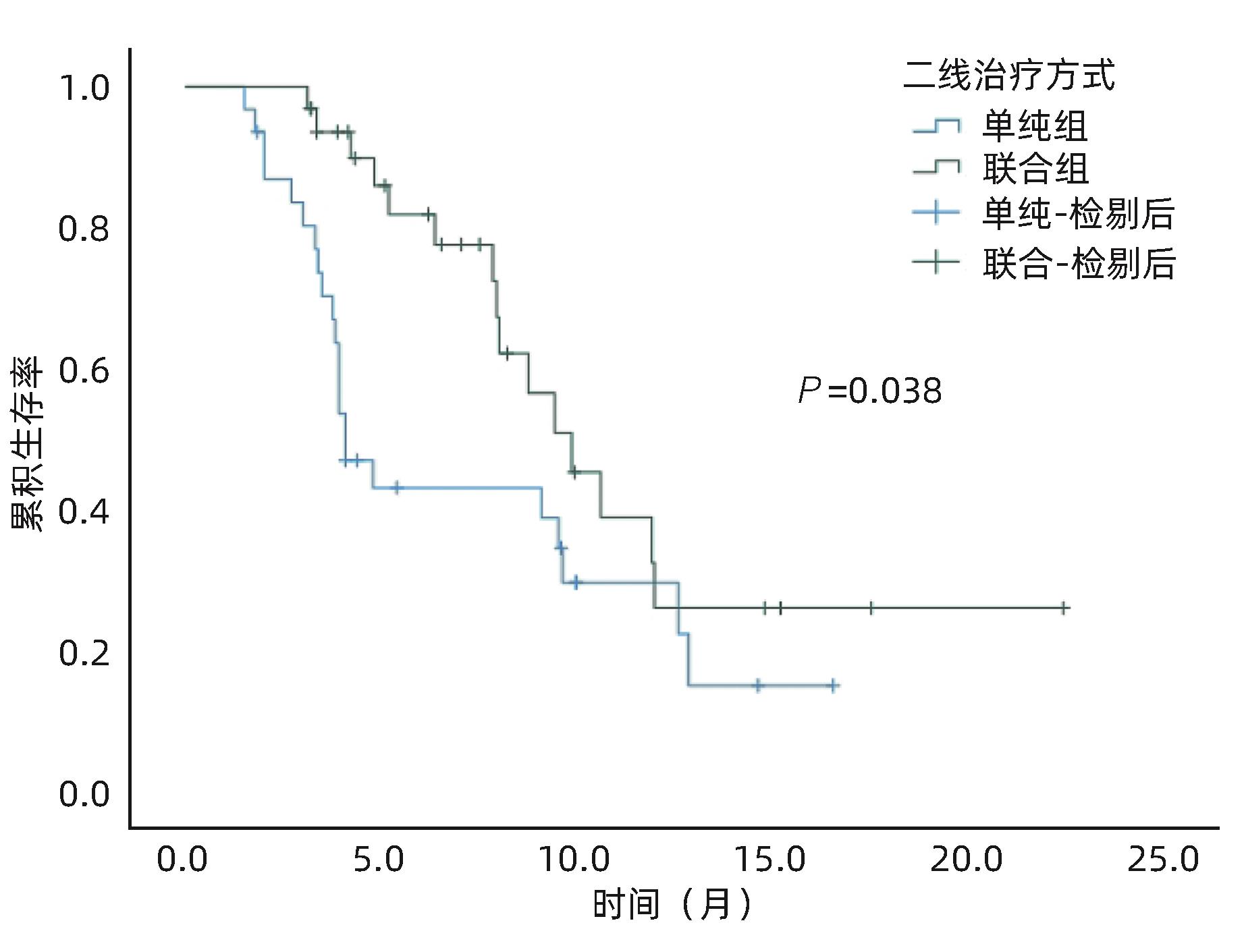| [1] |
General Office of National Health Commission. Standard for diagnosis and treatment of primary liver cancer(2022 edition)[J]. J Clin Hepatol, 2022, 38( 2): 288- 303. DOI: 10.3969/j.issn.1001-5256.2022.02.009. |
| [2] |
Clinical Guidelines Committee of Chinese College of Interventionalists. Chinese clinical practice guidelines for transarterial chemoembolization of hepatocellular carcinoma(2023 edition)[J]. Natl Med J China, 2023, 103( 34): 2674- 2694. DOI: 10.3760/cma.j.cn112137-20230630-01114. |
| [3] |
CHIU DK, TSE AP, XU IM, et al. Hypoxia inducible factor HIF-1 promotes myeloid-derived suppressor cells accumulation through ENTPD2/CD39L1 in hepatocellular carcinoma[J]. Nat Commun, 2017, 8( 1): 517. DOI: 10.1038/s41467-017-00530-7. |
| [4] |
XING R, GAO J, CUI Q, et al. Strategies to improve the antitumor effect of immunotherapy for hepatocellular carcinoma[J]. Front Immunol, 2021, 12: 783236. DOI: 10.3389/fimmu.2021.783236. |
| [5] |
LAFACE C, FEDELE P, MASELLI FM, et al. Targeted therapy for hepatocellular carcinoma: old and new opportunities[J]. Cancers(Basel), 2022, 14( 16): 4028. DOI: 10.3390/cancers14164028. |
| [6] |
GALLE PR, FINN RS, QIN S, et al. Patient-reported outcomes with atezolizumab plus bevacizumab versus sorafenib in patients with unresectable hepatocellular carcinoma(IMbrave150): an open-label, randomised, phase 3 trial[J]. Lancet Oncol, 2021, 22( 7): 991- 1001. DOI: 10.1016/S1470-2045(21)00151-0. |
| [7] |
REN Z, XU J, BAI Y, et al. Sintilimab plus a bevacizumab biosimilar(IBI305) versus sorafenib in unresectable hepatocellular carcinoma(ORIENT-32): a randomised, open-label, phase 2-3 study[J]. Lancet Oncol, 2021, 22( 7): 977- 990. DOI: 10.1016/S1470-2045(21)00252-7. |
| [8] |
QIN S, CHAN SL, GU S, et al. Camrelizumab plus rivoceranib versus sorafenib as first-line therapy for unresectable hepatocellular carcinoma(CARES-310): a randomised, open-label, international phase 3 study[J]. Lancet, 2023, 402( 10408): 1133- 1146. DOI: 10.1016/S0140-6736(23)00961-3. |
| [9] |
KUDO M. Atezolizumab plus bevacizumab followed by curative conversion(ABC Conversion) in patients with unresectable, TACE-unsuitable intermediate-stage hepatocellular carcinoma[J]. Liver Cancer, 2022, 11( 5): 399- 406. DOI: 10.1159/000526163. |
| [10] |
KUDO M, HAN KH, YE SL, et al. A changing paradigm for the treatment of intermediate-stage hepatocellular carcinoma: Asia-Pacific Primary Liver Cancer Expert Consensus Statements[J]. Liver Cancer, 2020, 9( 3): 245- 260. DOI: 10.1159/000507370. |
| [11] |
PENG Z, FAN W, ZHU B, et al. Lenvatinib combined with transarterial chemoembolization as first-line treatment for advanced hepatocellular carcinoma: a phase iii, randomized clinical trial(LAUNCH)[J]. J Clin Oncol, 2023, 41( 1): 117- 127. DOI: 10.1200/JCO.22.00392. |
| [12] |
ZHU HD, LI HL, HUANG MS, et al. Transarterial chemoembolization with PD-(L)1 inhibitors plus molecular targeted therapies for hepatocellular carcinoma(CHANCE001)[J]. Signal Transduct Target Ther, 2023, 8( 1): 58. DOI: 10.1038/s41392-022-01235-0. |
| [13] |
SU GL, ALTAYAR O, O’SHEA R, et al. AGA clinical practice guideline on systemic therapy for hepatocellular carcinoma[J]. Gastroenterology, 2022, 162( 3): 920- 934. DOI: 10.1053/j.gastro.2021.12.276. |
| [14] |
BAO MH, WONG CC. Hypoxia, metabolic reprogramming, and drug resistance in liver cancer[J]. Cells, 2021, 10( 7). DOI: 10.3390/cells10071715. |
| [15] |
Alliance of Liver Cancer Conversion Therapy, Committee of Liver Cancer of the Chinese Anti-Cancer Association. Chinese expert consensus on conversion therapy in hepatocellular carcinoma(2021 edition)[J]. Chin J Dig Surg, 2021, 20( 6): 600- 616. DOI: 10.3760/cma.j.cn115610-20210512-00223. |
| [16] |
Clinical Guidelines Committee of Chinese College of Interventionalists. Expert consensus on the TACE failure/refractoriness and its subsequent therapies in treating patients with hepatocellular carcinoma[J]. J Intervent Radiol, 2022, 31( 11): 1039- 1044. DOI: 10.3969/j.issn.1008-794X.2022.11.001. |
| [17] |
SONG YJ, QIAO JC, SONG JH. Right hepatectomy of CNLC stage IIIa hepatocellular carcinoma after successful conversion by TACE combined with targeted therapy and immunotherapy: a case report[J/OL]. Chin J Hepat Surg(Electronic Edition), 2024, 13( 2): 227- 230. DOI: 10.3877/cma.j.issn.2095-3232.2024.02.018. |
| [18] |
CHENG YR, YAN D, YANG JD, et al. Effect of hepatic artery embolization chemotherapy combined with sorafenib in the treatment of primary liver cancer and its impact on patient immune function[J]. Clin J Med Offic, 2021, 49( 3): 290- 291. DOI: 10.16680/j.1671-3826.2021.03.16. |
| [19] |
BRUIX J, QIN S, MERLE P, et al. Regorafenib for patients with hepatocellular carcinoma who progressed on sorafenib treatment(RESORCE): a randomised, double-blind, placebo-controlled, phase 3 trial[J]. Lancet, 2017, 389( 10064): 56- 66. DOI: 10.1016/S0140-6736(16)32453-9. |
| [20] |
QIN S, LI Q, GU S, et al. Apatinib as second-line or later therapy in patients with advanced hepatocellular carcinoma(AHELP): a multicentre, double-blind, randomised, placebo-controlled, phase 3 trial[J]. Lancet Gastroenterol Hepatol, 2021, 6( 7): 559- 568. DOI: 10.1016/S2468-1253(21)00109-6. |
| [21] |
XU Y, FU S, SHANG K, et al. PD-1 inhibitors plus lenvatinib versus PD-1 inhibitors plus regorafenib in patients with advanced hepatocellular carcinoma after failure of sorafenib[J]. Front Oncol, 2022, 12: 958869. DOI: 10.3389/fonc.2022.958869. |
| [22] |
HUANG J, GUO Y, HUANG W, et al. Regorafenib combined with PD-1 blockade immunotherapy versus regorafenib as second-line treatment for advanced hepatocellular carcinoma: a multicenter retrospective study[J]. J Hepatocell Carcinoma, 2022, 9: 157- 170. DOI: 10.2147/JHC.S353956. |
| [23] |
LIU J, TAO H, YUAN T, et al. Immunomodulatory effects of regorafenib: Enhancing the efficacy of anti-PD-1/PD-L1 therapy[J]. Front Immunol, 2022, 13: 992611. DOI: 10.3389/fimmu.2022.992611. |
| [24] |
YANG Y, WANG C, SUN H, et al. Apatinib prevents natural killer cell dysfunction to enhance the efficacy of anti-PD-1 immunotherapy in hepatocellular carcinoma[J]. Cancer Gene Ther, 2021, 28( 1-2): 89- 97. DOI: 10.1038/s41417-020-0186-7. |
| [25] |
ZOU X, XU Q, YOU R, et al. Efficacy and safety of TACE combined with regorafenib plus PD-1 inhibitor in the treatment of hepatocellular carcinoma after sorafenib resistance[J]. J Hepatocell Carcinoma, 2023, 10: 267- 279. DOI: 10.2147/JHC.S399874. |
| [26] |
CAO Y, OUYANG T, XIONG F, et al. Efficacy of apatinib in patients with sorafenib-transarterial chemoembolization refractory hepatocellular carcinoma: a retrospective study[J]. Hepatol Int, 2021, 15( 5): 1268- 1277. DOI: 10.1007/s12072-021-10198-3. |















 DownLoad:
DownLoad:

